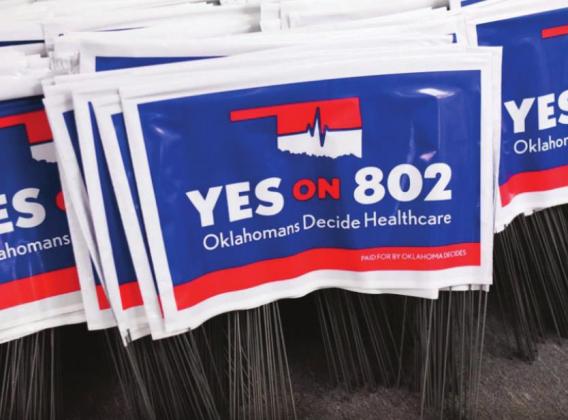More than a decade after President Barack Obama signed the Affordable Care Act into law, low-income Oklahomans are about to benefit for the first time from one of the health-care reform’s signature provisions.
Starting July 1, Medicaid expansion will take effect in the state. Estimates show more than 200,0000 previously ineligible adults will be able to enroll in the state’s Medicaid program, known as SoonerCare.
Healthcare leaders and patient advocates say this could be a game-changer in trying to bring down the state’s uninsured rate — which is the second highest in the country — improving health outcomes and bolstering the state’s hospitals since they will be less dependent on free care they provide to residents with no or little insurance.
But it hasn’t been a quick – or easy – journey to reach this point.
When voters approved a state question to expand Medicaid last year, it capped a long-running and highstakes dispute in the State Capitol over whether Oklahoma should join the 36 other states that have accepted the expansion.
Democrats long argued for the expansion, which would extend Medicaid eligibility to adults making up to 138 percent of the federal poverty level ($17,236 for an individual or $35,534 for a family of four).
But the proposal has faced widespread skepticism by Oklahoma Republicans, who warned the state’s cost would still be too much, the federal government would eventually shift more of the cost to states and the state would have to respond by raising taxes or cutting costs elsewhere.
Many in the state’s Republican party, however, would come around to supporting a version of the expansion, as long as they could make Oklahoma-specific tweaks to the program.
In 2016, then-Gov. Mary Fallin, along with former Health Care Authority Executive Director Nico Gomez, endorsed what they called the “Medicaid rebalancing act.” This ill-fated plan proposed to use Medicaid fund dollars to buy private insurance for low-income adults who would otherwise be eligible under traditional expansion programs.
But although it gained some support from Republican leaders, lawmakers killed the proposal without even voting on it.
Stitt then seemed to be on the cusp of accepting the expansion earlier this year. His two-phase SoonerCare 2.0 plan called for the state to begin implementing the expansion this July and then follow that up by seeking a federal waiver to move to a block-grant model, add work requirements and require many enrollees to pay up to $120 in premiums per year.
Lawmakers backed Stitt’s proposal as they passed a pair of bills this year that would have increased hospital provider fees and used savings to pay for the projected $164 million in the state’s share of the costs.
Stitt, however, vetoed the funding proposal — even though he earlier proposed the key funding measure of increasing the fee hospitals pay — and dashed hopes for an expansion in 2020. He cited the economic uncertainty in light of the COVID-19 pandemic as one of the reasons for going back on the plan.
But like in other states that resisted the expansion, it was the voters who finally gave it the green light.
Yet even after last year’s vote, it wasn’t a guarantee that the expansion would really take effect as planned.
If lawmakers during the past session were unable, or unwilling, to fund the necessary state costs to get the expansion underway, Oklahoma could’ve found itself in limbo. That’s the case in Missouri, which similar to Oklahoma, passed a voter referendum to expand Medicaid.
As of last week, a Missouri judge put the expansion on hold after Gov. Mike Parson refused to proceed with the expansion.
Though Stitt and others who opposed the state question repeatedly claimed that approving Medicaid expansion would lead to dire budget cuts or tax increases, that will not be the case. No new tax money is being used to pay for the state’s $164 million share of the Medicaid expansion costs or for any other purposes in the budget agreement lawmakers reached this spring.
Lawmakers said they will pay the state’s $164-million a-year portion (the federal government picks up 90% of the costs) by utilizing enhanced Medicaid rates that were triggered by the pandemic, a recently passed extra cash incentive for states to accept the expansion and a provider fee from hospitals.
Trevor Brown has been an Oklahoma Watch reporter since 2016. He covers politics, elections, health policies and government accountability issues. Call or text him at (630) 301-0589. Email him at tbrown@oklahomawatch. org. Follow him on Twitter at @tbrownokc.
Oklahoma Watch, at oklahomawatch.org, is a nonprofit, nonpartisan news organization that covers public-policy issues facing the state

